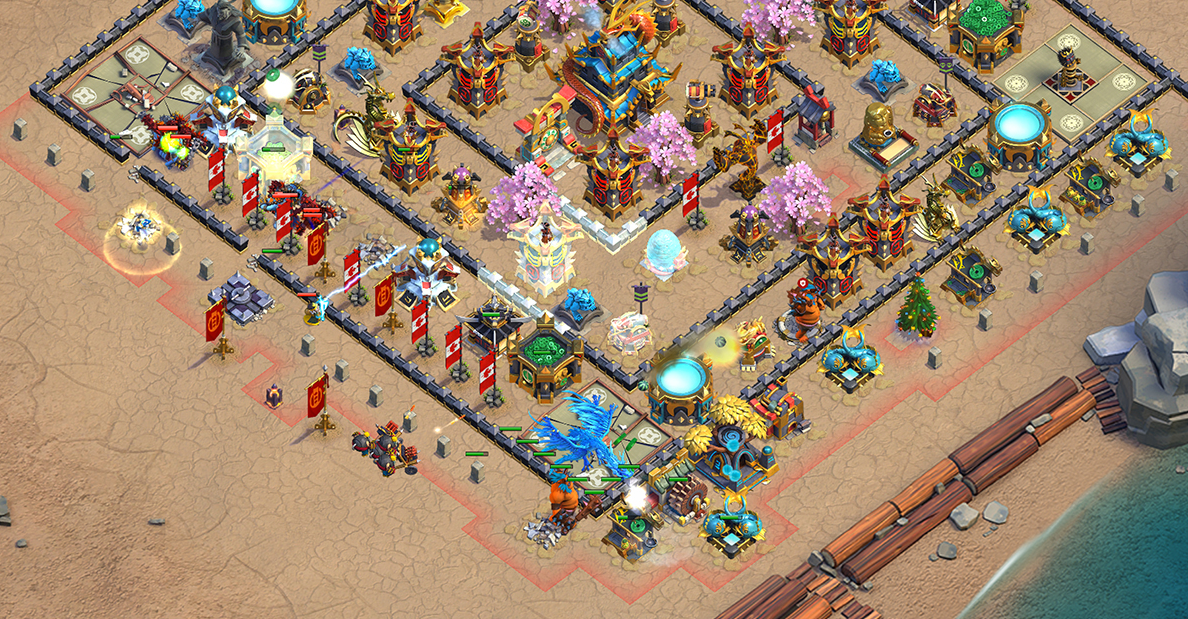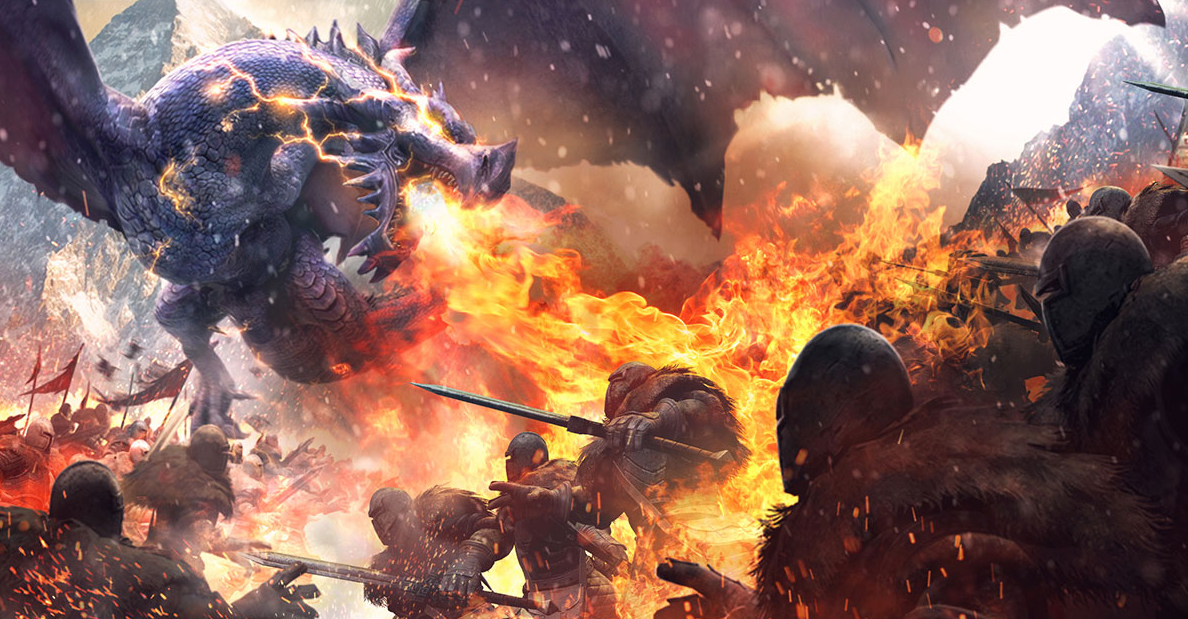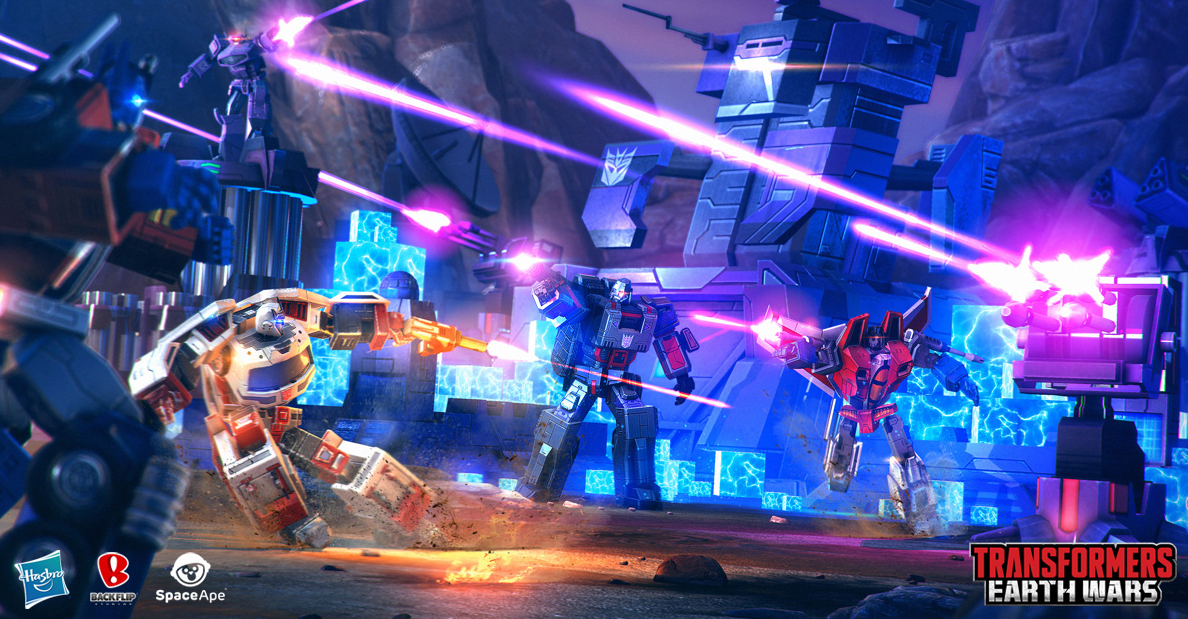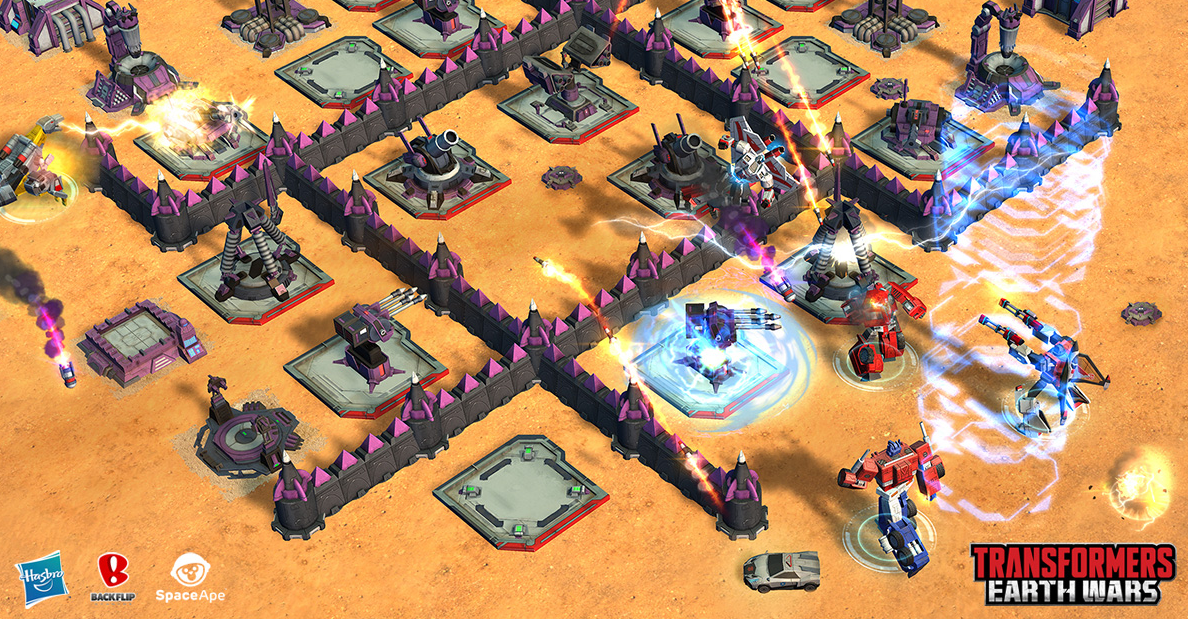In the spring of 2017, Supercell acquired a controlling stake in Space Ape Games. The transaction amount was $55.8 million. We talked with Simon Hade, co-founder of Space App Games, about the history of the deal and how games are being developed in the company today.
The material was released with the support of PGC Helsinki 2017.
Alexander Semenov, Senior Editor App2Top.ru : In May 2017, 62% of Space Ape Games bought Supercell. How did the deal affect you?

Simon Heid
Simon Heid, founder and COO of Space App Games: Not much has changed for the studio. One of the key conditions of the deal was the absence of global changes. Supercell liked us the way we are, they believed in our mission, in our team. There was no talk of a merger or anything like that.
We all have an unpleasant experience of encountering situations when companies begin to merge for the sake of the merger itself and in the process forget why they started all this at all. So we separately stipulated in the contract that we would remain independent.
The most significant difference is that now we have someone to ask for advice about games in development. We can show our builds to the best of the best, the most successful developers of our generation, and get invaluable feedback. Often their advice is ten out of ten. And even if we disagree with them, they still trust our opinion, let us decide for ourselves what is best for us and our players. Such interaction brings benefits and inspires. I would like to think that our experience in working with events also turned out to be useful for Supercell in some way.
Do you feel the burden of responsibility?
Heyd: I will not say that there was any additional responsibility. I always feel the burden of responsibility for the people who trust me, whether they are millions of players, employees or investors. But before we were part of the most successful company in the West — and then we were bought by the most successful company in the East. And I feel that a huge number of new opportunities have opened up before us, and the internal bar of quality has risen even higher. We can no longer waste time on the game if we are not sure that it will succeed.
Why should the studio, whose revenue from all games amounted to $ 60 million last year, be sold?
Heyd: We have never had a desire to sell out in the conventional sense — that is, to repel investments, to resign responsibility for the studio or to transfer management to someone else. We have had many such opportunities over the years, and we have never taken them seriously. What we really wanted to do was do what we like — that is, develop popular games. And as long as possible. But now it’s 2017, and the market imposes certain restrictions, so we were constantly looking for ways to increase the chances that we would stay in the ranks and continue doing what we love.
If you imagine what doors opened up for us as soon as we became part of Supercell and Tencent, or what marketing capacities are now available to us, or think about the fact that the most successful game designers of our generation are ready to give us advice and invest in our success… Then it becomes clear how the deal with Supercell helps us achieve our goals.

Samurai Siege
In his address to employees in connection with the deal, the CEO of Space Ape Games, John Earner, briefly mentioned the phase in the development of the company before its sale to Supercell, that you began to take more risks, as well as the reduction of teams and the simultaneous increase in the quality of games. Can you tell us a little more about this phase?
Heyd: On the one hand, we concluded the deal with Supercell very quickly. We met at the GDC in March. They told us where we were going, showed us what we were working on. Supercell liked it. A couple of months of mutual curtsies, and the deal was closed.
But if you look at the story from a different angle, it turns out that it all started in January 2016. Then we met with the leaders from Supercell, and we had almost the same conversation as later at GDC. Our leads showed the games we were working on at that time. And these games in theory were very different from the strategies we were used to. But even before lunch, it became clear that Supercell sees right through us. In words, we were ready to create new things and take risks, but in fact it turned out that we were deceiving ourselves.
The fact is that we used to develop games very consistently and persistently, “without raising our heads” — because that’s how we had to work to stay afloat. And in the same way we tried to come up with new ideas. We conducted marketing tests, submitted concepts for analysis to our product committee, and launched prototypes. They did everything right, but they didn’t catch the essence. That’s about the spirit of Supercell and spoke out. More precisely, not even like that, they told us something like “thank you, but let’s just stay friends.” And then we spent hours analyzing the conversation, trying to figure out exactly what they meant. And we came to what I mentioned above.
After that, we completely rebuilt the company’s structure in 12 months. In January 2016, approximately 100 people from the team supported two existing projects (Samurai Siege and Rival Kingdoms) and were developing another game (Transformers: Earth Wars). And about 6 employees created prototypes or came up with new ideas. By the time we met with Supercell at GDC, there were still 100 employees in the studio, but now 35 of these 100 people were engaged in game support, and the rest were working on new projects. The size of the average development team has decreased from 20 people to 8. The largest team has decreased from 45 employees to 15. We came up with and studied dozens of very different ideas from all sides and awakened in ourselves the creative potential that, according to Supercell, we lacked.
I want to emphasize that we have done all the work ourselves. That meeting with Supercell certainly affected us. It can even be said to have become the main catalyst for change, since we were able to at least approximately understand what the internal processes of Supercell look like, and borrow something useful from there for ourselves. But at the same time, we observed how other companies work and how they hire employees — Pixar, for example — and we have already learned a lot from these observations.

Rival Kingdoms
How many development teams and projects are there in the studio now?
Heyd: As of September 2017, we had 9 teams. Four of them are engaged in supporting existing games, and five are engaged in development.
How much time does it take on average for a project from a concept to a release?
Heyd: We don’t have any permanent production schedule, so there is no point in trying to deduce the average value.
12 people worked on Samurai Siege, and six months passed from the concept to the launch. Rival Kingdoms was created by about 18 people, it took 16 months to develop. A total of 40 employees worked on Transformers, and most of the team was engaged in art (at the start — about 25 people). It took 18 months to develop. The team that worked on Fastlane had about 10 people, and it took 8 months to work.
If we talk about games that are currently under development, then the “youngest” project started just a week ago. But the people from the development team have been hatching the idea of this project for more than five months — they thought about it on gamejems and in their free time. The “oldest” project is already 18 months old.
In general, we have a rule: if it takes more than six months to bring an idea to implementation, whether it’s a beta version or just a build for friends and family, then something is wrong with it.
But here I believe in a team that stubbornly holds on to its concept. If people have spent 18 months together, it turns out that they have already gone through three or four different phases of development, each of which allows you to look at the idea from a different angle. In addition, the composition of the team has changed a lot during this time. So I’ll put it another way: the team has been developing the idea for 18 months anyway.
But in general, we prefer games that can be developed relatively quickly (in 6-18 months) by a small team (10-15 people maximum). If it takes 30 people and 2 years to implement an idea, then we will most likely abandon it. And we get the best projects with the participation of 3-5 people. We have been working exactly according to this scheme for some time and therefore now we are able to create complex projects even with such restrictions. In addition, new titles are rarely created from scratch. For example, tools for making changes to an already running game are taken from Rival Kingdoms, clan chat from Siege, and gacha from Transformers.
How exactly are the processes built within the company, for example, within the framework of working on one game. How is the process built from the idea to the global launch? Who is responsible for what, who works how much, how decisions are made?
Heyd: We try to make the new teams as independent as possible. The composition is sometimes formed by itself. For example, if we take the project, which is only a week old, then we worked on the idea for about five months — in our free time and during various game jams. Sometimes a team is formed using Ape Space. The name is a play on words (Space Ape, literally “space monkey” is the name of the studio. And the phrase Ape Space or “monkey space” is formed by rearranging words in the name, — approx. editorial offices).
Ape Space looks like this: every month for a period of two to five days, all employees quit their jobs and start working on whatever they want. Sometimes there is no goal, and sometimes everyone focuses on certain difficulties with a particular game or genre issues. The employees themselves organize their time during the month so that during these few days they can do everything to the maximum. The result of the process has already become two almost finished games. And as a result, one team was born. Sometimes ideas “don’t live up” to development, but people understand that they are comfortable working together, and come up with something else.
If there is a feeling that there is some kind of mess that will scare any team with tight deadlines, a schedule and a clear distribution of responsibilities, then this feeling is correct.
The transition to a new state was given to us with great difficulty. It took almost 9 months before we started getting more or less sane results, and we are still working on improving them every month. We were like people who had just started going to the gym. At first, the “creative muscles” hurt. But eventually we got used to it, started learning new things and adapting, and now Ape Space is a very powerful tool that helps organize processes, and not only for teams, but also for individuals. It takes a very firm understanding of what you are doing to “pull out” such a system. And a lot of time. Fortunately, our three strategies were already making quite enough money at that time, and we could afford to take the time to sort everything out. In the previous few years, when we were only thinking about how to pay the bills next month, it would have been much more difficult for us to switch to the new system.

Rival Kingdoms
So, as soon as the idea came to light — with the help of Ape Space or with the participation of people who like the idea so much that they are ready to work on it in their free time — we recruit a team. It usually consists of 2-3 people who continue to study the initial concept. They usually develop the idea for 30 days. Sometimes they create a playable demo, sometimes they draw a prototype on paper. Sometimes they conduct marketing research. The goal at this stage is to decide whether the idea is worth developing further. If so, we will increase the team to 3-6 people. At this stage, we try not to add individual specialists to the team for as long as possible. The idea is that everyone can simultaneously perform several duties. That is, let’s say that a server developer thinks over the design. Or the artist created animation, models and concept art. At Space Ape, we try to hire only “T-shaped people”, that is, professionals who are well versed in one discipline and at the same time have quite decent knowledge in two related fields.
And, of course, we have a group of specialists, mainly consisting of designers and product managers, who give feedback. Their task is not to approve or disapprove of any idea, but to ask the right questions, to identify a certain pattern that will guide the team on the right path, or to help determine whether the concept is worth developing or not. Sometimes it happens that a strong team gathers, which does not have a single released game in its assets. And then it is useful if the feedback to this team is given by “battle-hardened” professionals who will draw the attention of newcomers to moments that they may not have thought of.
Ultimately, the decision whether to live the game or not is made by the team itself. But a lot of people at this stage prefer to consult with other employees. They organize game marathons and collect feedback. If most of the company believes that the game should be “killed”, then the team does not have to agree. But it often turns out that if it turns out to analyze the arguments of employees, then in the end it is possible to improve the project — or make the right decision. In our company, we devote a lot of time to feedback. That’s why it’s great that we are now collaborating with Supercell, which employs some of the best developers in the world who can share their thoughts about our ideas.
What proportion of the team is responsible for marketing and working with the community?
Heyd: We have 111 people in the team. Of these, 6 are employed in marketing, including one employee who is responsible for working with video bloggers and another who manages our streams.
How much of the company’s revenue do you reinvest in marketing?
Heyd: It depends on what stage of the life cycle the game is at. We don’t spend a cent on promoting Samurai Siege or Rival Kingdoms, despite the fact that these projects now bring exactly the same amount as a year ago. This is because a community has formed around them from very passionate and extremely involved players who play for the sake of events and updates. Transformers is still developing and still earns more than at the launch stage, which is simply unprecedented for this genre. The brand is very popular, and therefore we can invest in marketing much more than in the case of original projects. The Fastlane project is only a couple of months old, so it’s still profitable for us to spend money on its promotion, and the audience of the game is still growing.
We don’t have a separate budget for marketing. Some studios necessarily reinvest from 20 to 30% of profits in marketing. We don’t do that. Sometimes we spend more, sometimes much less. We have certain indicators of profitability of spending, or something like an investment strategy. If our marketing team spends a dollar, and the data shows that this dollar will “bounce back” within 6 months, then we will spend this money. If not, then no. The period during which the costs should be recouped varies. If the game is at the beginning of the life cycle, then the payback is much higher. Over time, marketing becomes less and less effective, and the payback drops.

TRANSFORMERS: Earth Wars
What do you start from when making decisions – whether or not to introduce new functionality into the game?
Heyd: Everything here 100% depends on what the teams decide. Each of them has its own approach.
A community of very dedicated players who play every day has formed around Samurai Siege and Rival Kingdoms. They want to see that the game is changing, that new tasks appear, that the community remains alive and involved. But at the same time, they do not like serious changes in the structure of the game. They are used to a certain gameplay, and if you change it a lot, they will leave. So in this case, updates affect the content more in the later stages of the game. Sometimes, thanks to such updates, tactics and winning strategies change, so that the game remains interesting for players. But from the developer’s point of view, there are no special changes.
Transformers, on the contrary, is still developing. Every couple of months we make major changes to the functionality of the game, and this allows us to launch new events and create additional tasks. Players are very attracted to the brand, and in the game itself there are many aspects of lore (from the English lore — knowledge. The term is used to refer to the history of the game universe, — approx. editorial offices) that we have not yet fully investigated and for which there is a huge demand. For example, six months after the global release, we introduced gestalts into the game (Combiners – robots made up of several transformers — approx. editorial offices). That month turned out to be the most financially successful in the history of the game. This is an unprecedented phenomenon for such a genre. It usually happens that after success at launch, the game expects a gradual decline.
With Fastlane, everything is different. It’s much more casual. There is an opportunity to play offline, and there are not very many social features in it. There are, of course, leagues and leaderboards, and you can compete with other players, but full-fledged clans have not yet been made. Perhaps we will add events and social features there, as in our strategies. It all depends on the development team and whether they decide that they should spend time on it. Maybe they will want to pay more attention to some other features, or maybe they will decide that it is better to focus on the next project. We, the leaders, try not to interfere in such decisions and let them choose for themselves.
Mobile strategies have changed a lot since the release of Clash of Clans. You have also made a considerable contribution here, being the first to add, for example, clan wars. What is a mobile strategy necessary for success today?
Heyd: It’s great that you mentioned this! Back in 2013, our Samurai Siege and I managed to create a nice little niche for ourselves, because we were the first to make the clans really compete – a year before everyone else started doing the same. In Rival Kingdoms, we went even further and created a full-fledged gameplay for communities, which was based on events and weekly updates.
Unfortunately (for developers, not for players), alliances and updates in 2017 are key elements of the strategy. You can’t just add a clan chat. We need a full-fledged social component. Partly because that’s what the players expect, but also because it’s necessary to promote the game. Otherwise, you can’t take a significant place in the market — unless you are ready to spend millions on promotion or if there is no super effective monetization. The game should “catch”. She needs to be able to create an online community around herself, so that players bring friends to encourage each other to play. This hype around the game in the early stages is very important. So beta is increasingly becoming a marketing tool, rather than a way to really test the game. It is necessary that all social features are in the game from the first day. You need to launch events for alliances right in beta. You can’t screw them on after the launch.
You’re probably watching the competition. Which of the latter within the genre impressed?
Heyd: To be honest, I’m not following the changes in the mobile strategy market as closely as before. The fact is that at the moment our main task is to create new genre niches and occupy leading positions in them. Yes, if you set a goal, you can allocate a certain number of projects that are potentially capable of earning $ 20-50 million. But we are not setting ourselves such a task now.
It’s more interesting for me to watch developers who take proven techniques from mobile strategies and transfer them to other genres or adapt them to unexpected game patterns. Can you imagine, for example, slots with alliances, as in MMO strategies? Or clan wars in farms? But such features exist and are very successful.
I also watch games very closely that open up new market niches and offer complex mechanics to an audience that has previously interacted with mobile games on a very superficial level.

TRANSFORMERS: Earth Wars
Who is the main audience of your games? And how much does the audience overlap between your projects?
Heyd: The target audience of our strategies is middle—aged men. A typical user is under forty, he has two small children, he used to play games often, but now there is not much time. In general, almost like me, only a couple of years younger.
But our new games are completely different. One team we have almost entirely consists of women, and they are developing a game that is already very well accepted by female gamers. The other team is almost exclusively Asian (or Asian-American). The game they are developing is more like one of Tencent’s projects. Such a diverse team — and we have representatives of more than 30 nationalities working in Space Ape — helps us create projects for very different users.
At the same time, each game usually has a clear target audience. We require teams to be able to articulate clearly who they are making the game for. And we want to be sure that there are a lot of users in question, and that they need just such a game. It’s always very easy to succumb to the temptation and start making games for yourself. Therefore, it is important to remember that there are many different users around and that you should not limit yourself in creative searches.
In TRANSFORMERS: Earth Wars, you switched to 3D for the first time, although you remained within the genre. How important is it today to translate games into 3D if the perspective in games remains isometric?
Heyd: It seems to me that the importance of production value or “product value” (and in the case of consoles, this includes 3D graphics) is greatly exaggerated. It is more important that the game can run at 60 fps on as many devices as possible. And what the user interface is in the game means much more than the presence or absence of 3D graphics.
Nevertheless, the beautiful 3D graphics and realistic world of Transformers is one of the main reasons why fans, as they have repeatedly admitted, love the game so much. And this is one of the main reasons why our partner platforms love this game. After all, it is the graphics that helps to fully demonstrate the capabilities of new devices. Partners love 3D. The marketing team loves it. But if you look at the box office top, you have to admit that commercial success is much more correlated with the traditional value of products than with 3D graphics. Everything, of course, depends on the game. But we prefer that the value of our products is determined by the gameplay, and not just by the presence of beautiful pictures.
And the last question: you are well known as a developer of mobile strategies. Now you have taken up racing, why?
Heyd: Over the past 18 months, we have redone the studio. From a team that developed only obviously profitable projects that would definitely help it stay afloat, we have turned into a studio that is not afraid to experiment with new directions, wants to take leading positions in these areas and therefore takes inevitable risks. We allow small teams to make independent decisions and expect original ideas from them, which they will develop, test and bring to mind. And it so happened that out of the total number of games that resulted from this process, two are racers.
